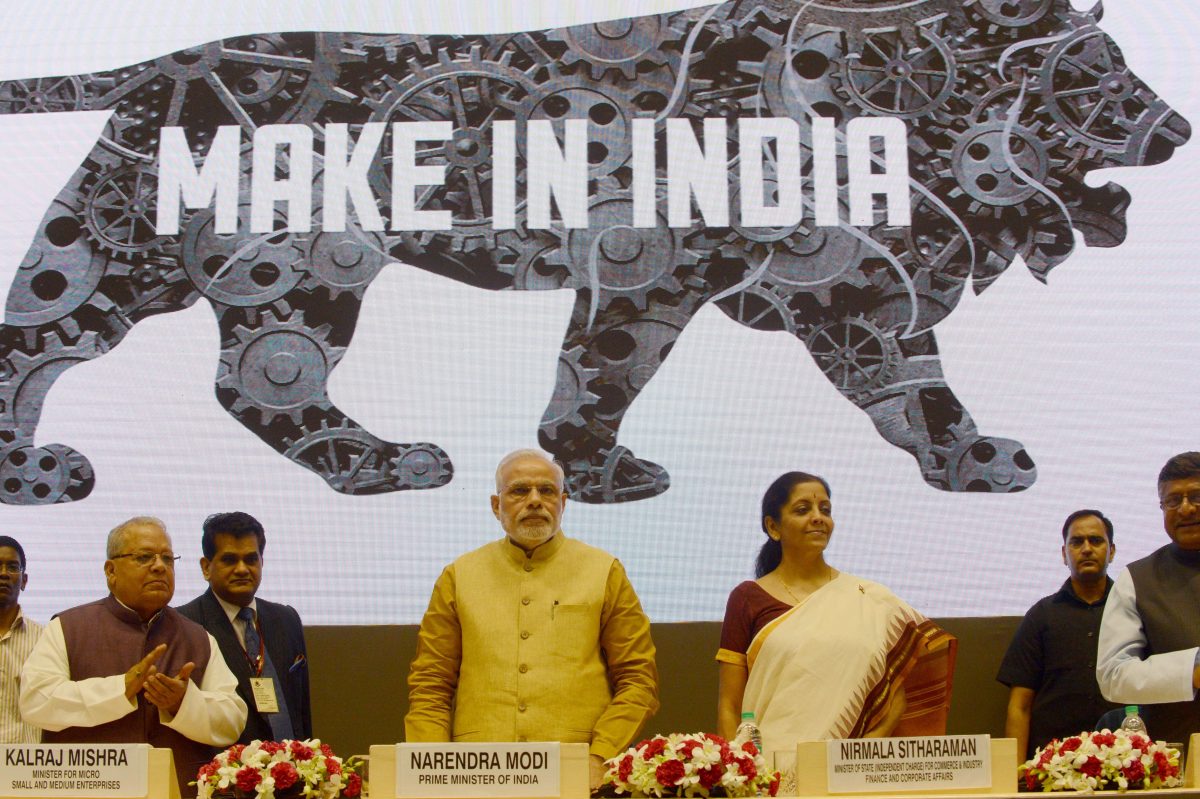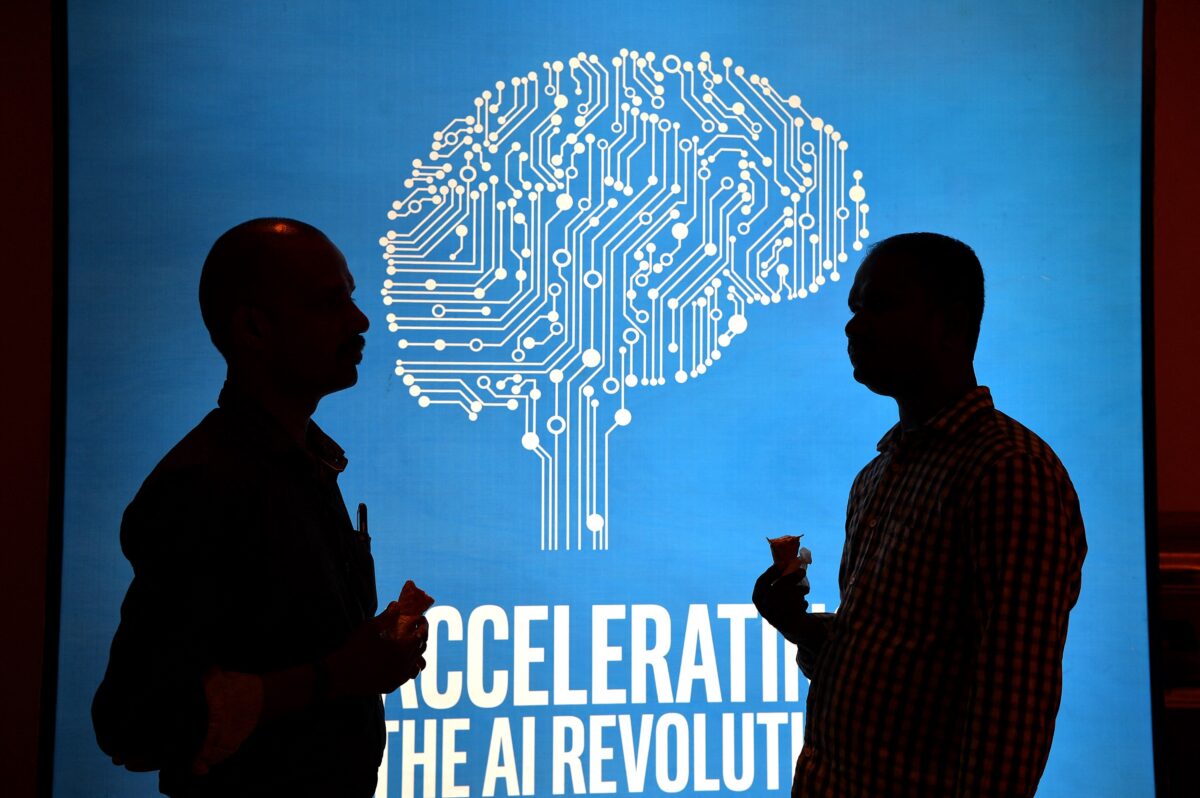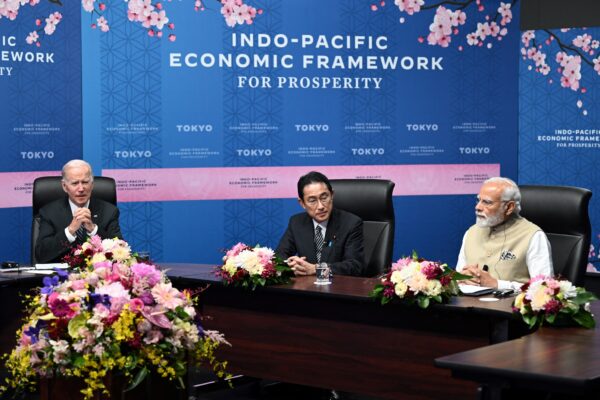


Amidst increasing aggression by communist China that threatens the existing global order, India is one democratic nation that’s widely seen as an emerging power and a balancer against China. The resilient Indian economy has created hope and, with manufacturing companies looking for factory floors outside of China, there’s a lot of buzz in the global media about India replacing China.
Experts have told The Epoch Times that the narrative of India replacing China is overplayed, with a reality that is more nuanced. India is on its own unique trajectory of growth—it should identity its own strengths and should cultivate its own path towards global emergence, they said. How India does this will highlight its contributions to the changing world order and thus signify its global leadership.
“India offers a very stark and different choice in economy, security, and polity to China,” Kaush Arha, senior fellow at the Krach Institute for Tech Diplomacy at Purdue and senior fellow at the Atlantic Council, told The Epoch Times.
Indian Prime Minister Narendra Modi is scheduled to visit the United states mid this month and address a joint session of Congress. Arha said that Modi and his foreign minister, Dr. S Jaishankar, can “credibly” make the argument that India has never been more “relevant, active” than in the last ten years.
“It should stay with that,” Arha said, adding that the stark contrast between India and China is amply visible in the speeches by their respective top leaders, Modi and Xi Jinping.
“Xi’s speeches are full of rancor and negativity and resentment. Modi’s speeches are optimistic and devoid of correcting yesterday’s wrongs,” Arha said.
By China’s resentment, Arha meant the ruling Chinese Communist Party’s (CCP) narrative of “national struggle” to avenge the “humiliation” faced by the Chinese empire. Xi used the term “national struggle” multiple times in his speech on CCP’s 100 year anniversary on July 1, 2021.
Referring to the period after the 1840 Opium War, Xi said during his speech: “The country endured intense humiliation, the people were subjected to great pain, and the Chinese civilization was plunged into darkness. Since that time, national rejuvenation has been the greatest dream of the Chinese people and the Chinese nation.”
India too faced two centuries of colonial subjugation. But Arha noted that it doesn’t talk to the world the way communist China does. He defined India’s attitude as characterized by resilence in contrast to China’s resentment.
Aparna Pande, research fellow at the Washington D.C.-based Hudson Institute, told The Epoch Times in a written message that India is being wooed by almost every country in the world.
“2023 is viewed as the Year of India. Whether India translates that into economic growth is yet to be seen,” Pande said.
Arha said the world is looking to India vis-à-vis China because India’s resilience is more attractive than China’s resentment. The CCP’s arbitrary COVID lockdowns that sent shockwaves throughout global supply chains and trade.
“India at the moment doesn’t qualify as an economic competitor to China on equal footing, but rather as an attractive alternate large economy in a diverse portfolio. India is competing with other friendly economies to attract business away from China—e.g. Vietnam,” he said.
Read More
Pande believes that India can replace China. But for that to happen, a lot of work will be needed.
“India knows what it needs to do, economists and policy makers know what to do,” she said. “Reforms are needed and without them, India cannot grow that quickly. India cannot replicate others—it will have to go its own path.”
Experts have been mulling over if India can economically replace or rival China. While the debates on this topic are largely led by geopolitical narratives, Chinese state media has also jumped in to saying that India is way behind.
Analysts have told The Epoch Times that each time a nation rises to global emergence, it does so on its own unique strengths vis-à-vis its historical and contemporary context.
“India rivaling China economically is exaggerated. India at the moment doesn’t rival China but is posing itself as an attractive alternative. India has other rivals like Japan, South Korea, Vietnam, Australia (for critical minerals), and Indonesia,” Arha said, adding that India has some advantages vis-à-vis China and its other competitors.
One advantage, according to him, is geopolitical factors that accompany economic trends.
“A driver of India’s growth is the concern by leading businesses that they might suffer from over reliance on China,” he said. Those concerns about China are compounded by factors like forced technology transfers and arbitrary lockdowns under the CCP regime.
The world has turned apprehensive towards China because of the approaches to the global economy that the CCP demonstrated during the COVID pandemic, he said, adding that India on the other hand has the size and a few inherent advantages when it comes to offering an alternate manufacturing platform.
India has “leading tech industries backed by large tech workforce conversant in English,” he said, “and it’s a democracy buoyed by a young populations that’s more in-tune and less arbitrary.”
Pande highlighted the challenges that India is facing while on its way to attracting manufacturing companies.
“India’s labor force is not as skilled or educated as that of Southeast Asia, and so the lower end of manufacturing is coming; not the higher end. Apple phones are being assembled, not made,” she said, and only 10 percent of India’s workforce is trained compared to 60 percent in most countries.
Secondly, according to Pande, there is the need for more women in India’s workforce.
“It has one of the lowest percentage of women in workforce and many global manufacturing companies want women workers,” she said. “Majority textile workers anywhere in the world are women. India’s percentage for women in workforce has declined from 40 percent in 1990s to around 20 percent today.”
Arha said that currently, India’s education system is “somewhat untethered” to the growing industries and there’s a need to tailor education, particularly high school and vocational education, as a feeder to industry.
The issue of up-skilling India’s large labour force would involve its rural areas which, despite increasing urbanization, continue to be home to majority of Indians. This means that India’s economic emergence would continue to propel the urbanization of world’s largest rural demography.
According to Arha, this would need an inclusive approach to India’s infrastructure development, meaning that, along with its physical infrastructure which is indispensable, India would need development of its social and digital infrastructure as well.
Pande said that India needs “second generation” microeconomic reforms that will increase the efficiency and competitive power of India’s institutions and existing infrastructure.
“All these mean is that India needs to implement reforms to make it easy for companies domestic and foreign to operate and invest and make money,” Pande said.
Without them, India can’t grow the way it envisions itself to develop.
Arha believes that the economic emergence of India would be driven by rapid digitalization of its economy integrated into a global digital economy not cordoned off by IT behind a fire wall like that of the CCP.
“India can become a regional and global power in data. Economies are going to be data-centric. AI (artificial intelligence) will be more transformative than 5G networks,” Arha said, noting opportunities for India to become the Indo-Pacific hub for trusted data flows.
He said this would be an example of India playing to its own strengths and an opportunity to play a very important role in leading the emerging world.
“A data-driven edge computing revolution: that’s India’s advantage over China and even the rest of the world. Learning from the Ukraine experience, digitally empowered citizens can have significant impact on national defense and security as well,” he added.
Edge computing is cutting-edge technology that leverages data and analytics at the network’s edge, according to Sahar Tahvili, an AI researcher who holds a doctorate in software engineering and is author of the book “Artificial Intelligence Methods of Optimization of the Software Testing Process.”
“Instead of sending data to a centralized cloud infrastructure for processing, edge computing enables data to be processed and analyzed closer to where it is generated or consumed. This approach holds immense potential for revolutionizing knowledge by allowing the efficient processing of larger volumes of data,” she said, adding that edge computing can drive transformative changes across diverse sectors of the economy.
By harnessing the power of edge computing, organizations can experience enhanced efficiency, agility, and competitiveness because this technology can empower businesses to extract valuable insights from data in real time, leading to more informed decision-making and the ability to adapt quickly to changing circumstances, according to Tahvili.
“As edge computing continues to advance, its impact will be felt across industries such as manufacturing, transportation, healthcare, and smart cities,” she said. “The possibilities are vast, from real-time monitoring and analysis of machinery performance to enabling autonomous vehicles and powering intelligent infrastructure.”
This technology can potentially transform various sectors of the economy, revolutionizing knowledge and driving impactful innovations and make India the super hub of data and data analytics, Tahvili added.



